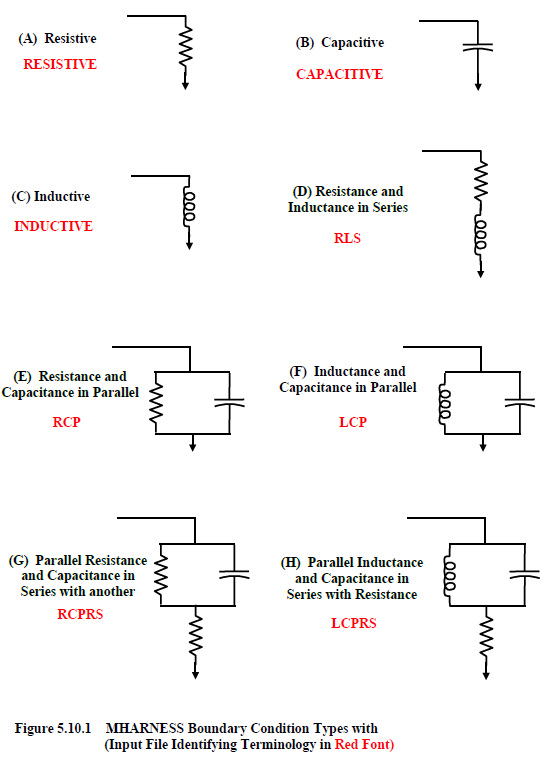Boundary Conditions |
In
MHARNESS® boundary conditions consist of circuit terminations Boundary conditions can be specified for individual segment conductors or at junction nodes. Cable segments, containing individual conductors, can also be terminated in a connector conductance. If a nonzero connector conductance is utilized, then this conductance applies to all conductors within the segment. If this is the case, then boundary conditions are not allowed when the conductance is small. The conductance is usually derived using a material conductivity. If the conductivity is less than 100.0 Mhos/m, then boundary conditions cannot be applied on any conductor or at any junction node where the conductance is so defined.There are two keywords associated with the cable connector impedance section of the MHARNESS input file. These keywords are listed below. • BOUNDARY CONDITION • JUNCTION BOUNDARY CONDITION
There are eight boundary conditions available. These are shown in Figure 5.10.1. If there is no segment connector conductance specified or if the connector conductance is zero, then a resistive termination is automatically installed with an infinite resistance value. This constitutes an open segment. To terminate a conductor or junction in a short, specify a resistive termination and let R = 0.0 Ω. To leave a conductor floating do not specify a boundary condition or let R be a large value such as 1.0e12 Ω.

EMA3D - © 2025 EMA, Inc. Unauthorized use, distribution, or duplication is prohibited.